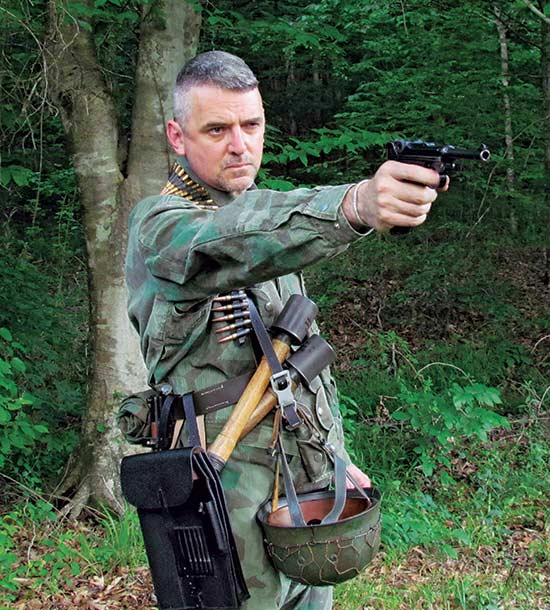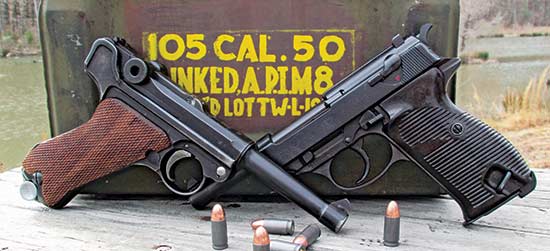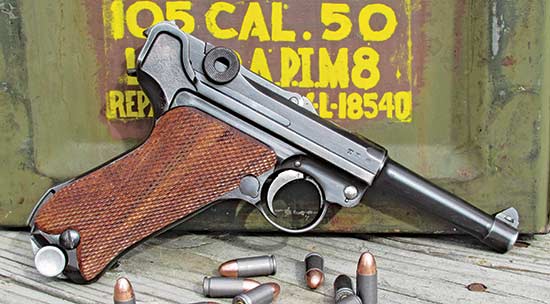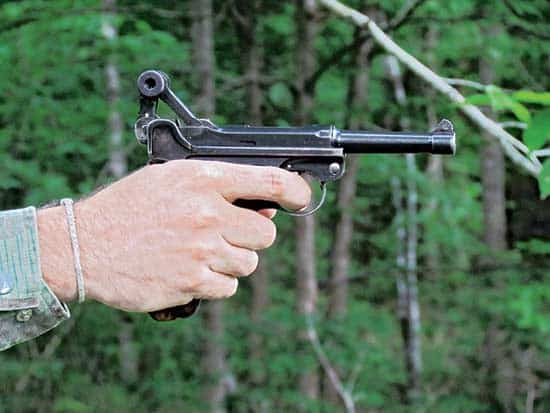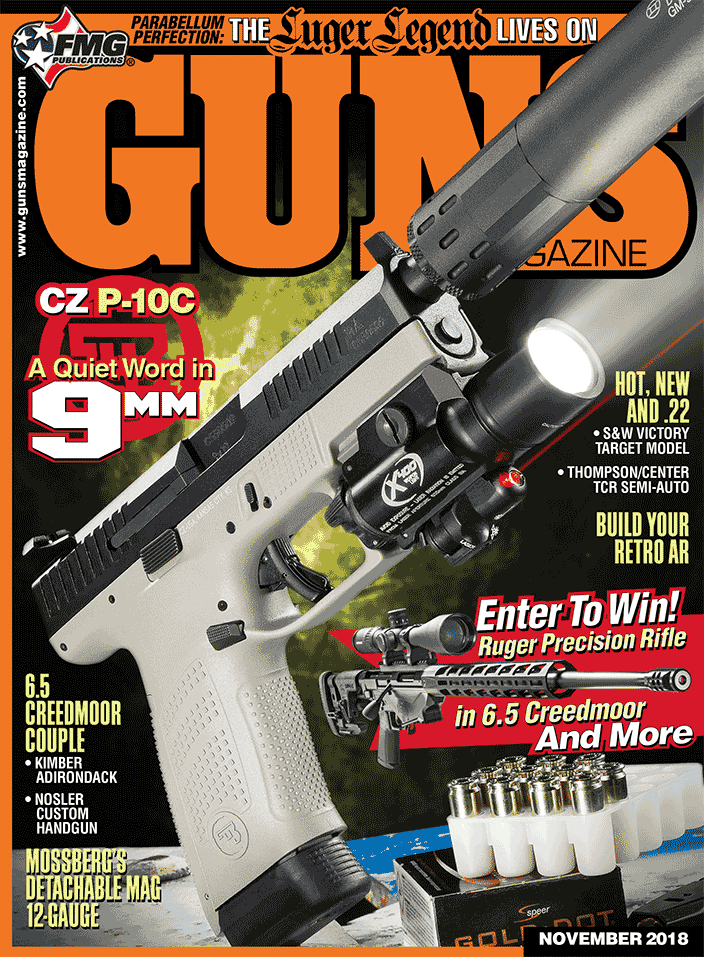Germany's Great Pistole 08: An Appreciation
Georg Luger And His Amazing "Artificial Knee"
“Epiphany,” according to Mr. Webster, refers to the moment when a previously mundane item or event takes on a new and unexpected significance. It was an epiphany birthed from a frustrating encounter with a stubborn cocklebur that brought us Velcro. Now it seems half the planet is held together with the stuff.
In 1893 a German engineer named Hugo Borchardt designed the Borchardt-Selbstladepistole while working for Ludwig Loewe and Cie of Berlin. At a time when the state of the art was the cartridge-fed revolver, Herr Borchardt’s magazine-fed repeater was earth-shattering. The action was an inspired mechanical adaptation of the human knee. The resulting gun was long and heavy and, revolutionary though it was, it failed to generate any significant military sales.
In 1898 one of Hugo’s fellow engineers, Georg Luger, received a patent for an improved version of the Borchardt-Selbstladepistole. Further improvements resulted in the 1900 pattern pistol sold in quantity to the Swiss military through the newly formed Deutsche Waffen und Munitionsfabriken (DWM). In 1903 the design was accepted by the Imperial German Navy, and in 1908 by the Kaiser’s army as the Parabellum P08. Thus was born arguably the most iconic handgun in history.
Anatomical Origins
To study the action of Luger’s Parabellum is to appreciate genius. The major components of the design are all on the outside so an astute student can press the barrel of an unloaded example against a firm object and watch the knee joint articulate in slow motion.
The barrel assembly moves backward about 6mm before the external cam built into the frame forces the toggle upward and breaks the lock. From that point, recoil pushes back the bolt and extracts and ejects the fired case. A coil spring in the butt drives the bolt back into battery, chambering a fresh cartridge in the process while locking the mechanism in position for the next round.
What is so extraordinary about this design is its genesis. The men who designed this pistol did so with little more than paper, pencils, and a ruler — no computers, no finite element analysis, no AutoCAD. Those who actually built the first examples turned out the parts on machines controlled via hand wheels and more than likely driven by steam.
German engineers of this era had a rite of passage. At the end of their training they were given a steel cube and a collection of hand files. Prior to graduation, the cube had to be a ball. We simply don’t produce artists like that anymore.
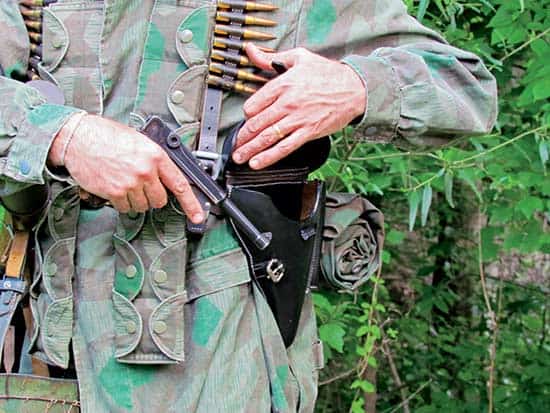
The leather hardshell holster as reflected by this superb replica from www.WorldWarSupply.com
did a great job of protecting the P08 from the elements. It was, however, not designed for speed.
Elegant Execution
There is a near-sensual elegance to the lines of Luger’s masterpiece. The rake of the butt places the line of recoil in proper orientation with the shooter’s arm, and the uniquely Teutonic ambience hearkens back to the days of greasy U-boats and cloth-covered biplanes. That the reality of its use involved frozen French mud and oceans of blood is a sobering reminder of what happens when industrialized nations go to war.
On the range, recoil is a bit on the sharp side and the single- action trigger is not as crisp as it could be. However, I own a beautiful 1972 Mach I Mustang my son and I resurrected from a nearly unrecognizable pile of rust. It’s hot in the summer, cold in the winter, and as loud as the World War II fighter plane for which it was named. Men aren’t necessarily drawn to classic machines because they are comfortable, reasonable or efficient. My muscle car gets 11 mpg on a good day. We admire, work on and collect such things because they are artifacts of a better, simpler time.
Magazines need a little help, hence the finger dimples in the base, but tactical reloads are still fairly expedient. The bolt locks open on the last round, so the shooter need only give the toggle a snap to close it on a fresh magazine. The sights are tiny and precise — as was the custom of the day — so they are not of any great tactical use.
Thoroughbred Warhorse
The P08 Parabellum is as much art as war machine. In my mind that it has a function it accomplishes so efficiently elevates it above the sort that just hangs on the wall or sits on a shelf.
Let us not forget that Herr Luger also designed the 9mm Parabellum cartridge. This little 9×19 masterpiece is the most-produced metallic cartridge in history. It still rolls out of munitions factories the world over to the tune of billions of rounds per year even today. That this fact might seem an afterthought in light of the handgun that bears his name speaks volumes regarding the man’s genius.
“Let him who longs for peace prepare for war — Si vis pacem, para bellum.” The phrase so moved Georg Luger that he christened both his pistol and the cartridge it fired, “the Parabellum” in tribute.
Names like Glock, Kalashnikov and Stoner have earned incontrovertible positions in the lore of firearms design. All three have shaped the direction of mankind in the last century, but they seem to a man to be pragmatists. They built tools that were revolutionary but industrial. Their weapons equip men at arms on a breathtaking scale.
By contrast, Luger shared comparable motivations yet produced his product under utterly dissimilar circumstances. His pistol yielded reliable service to generations of his countrymen at war, yet was produced in a time when engineering was arguably as much aesthetics as math.
I have lived to shoot my entire life and have written for the gun press for 20 years. That I was in my 5th decade before I purchased one of these remarkable handguns and really came to admire it is still a mystery to me.
A great man once extolled that art is where you find it. In the case of Georg Luger’s amazing artificial knee, the translation of human anatomy to engineering and then on to ordnance is an extraordinary bit of serendipity.
In my view it qualifies as art.
Special thanks to www.WorldWarSupply.com
for the quality reproduction military equipment used in this article.
